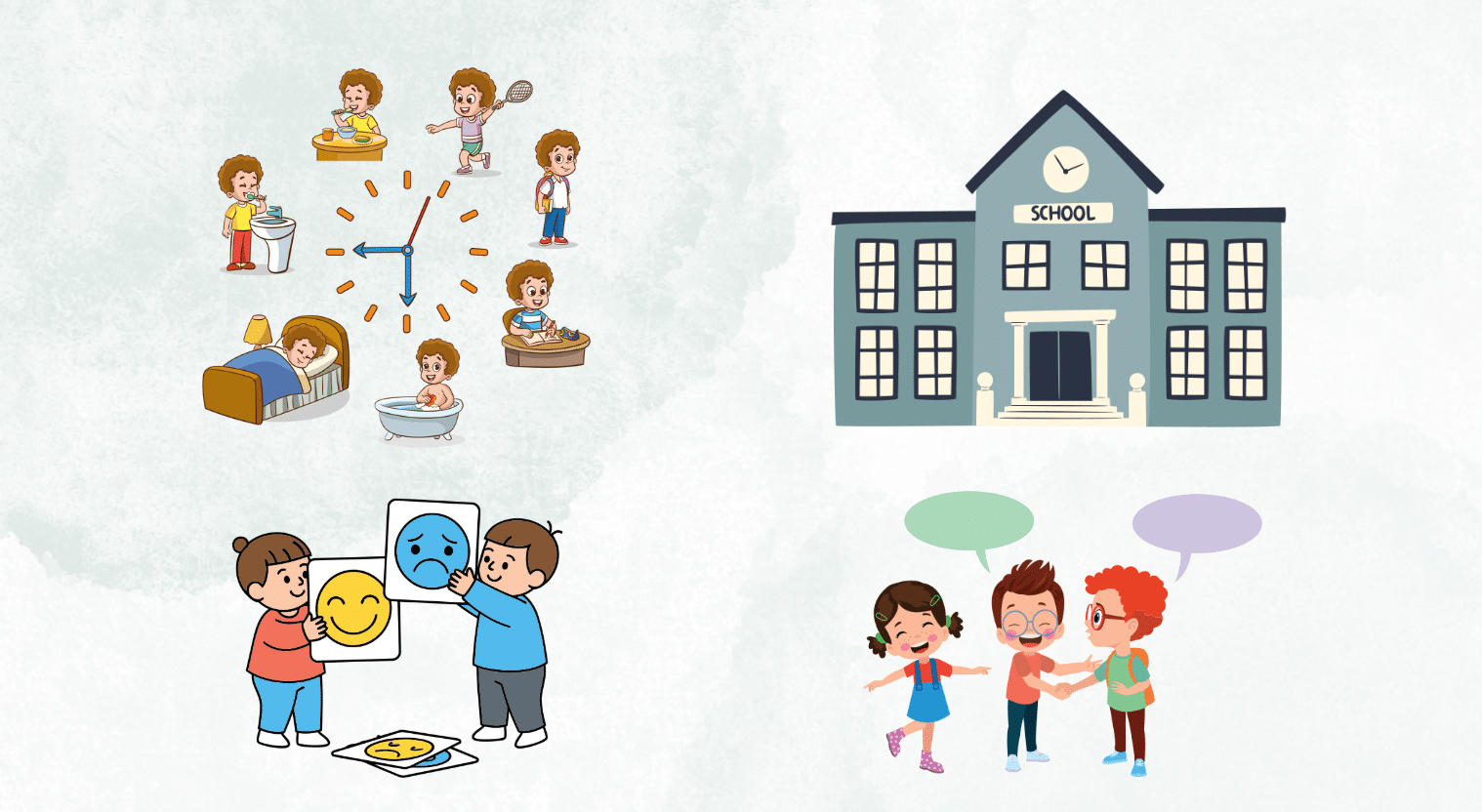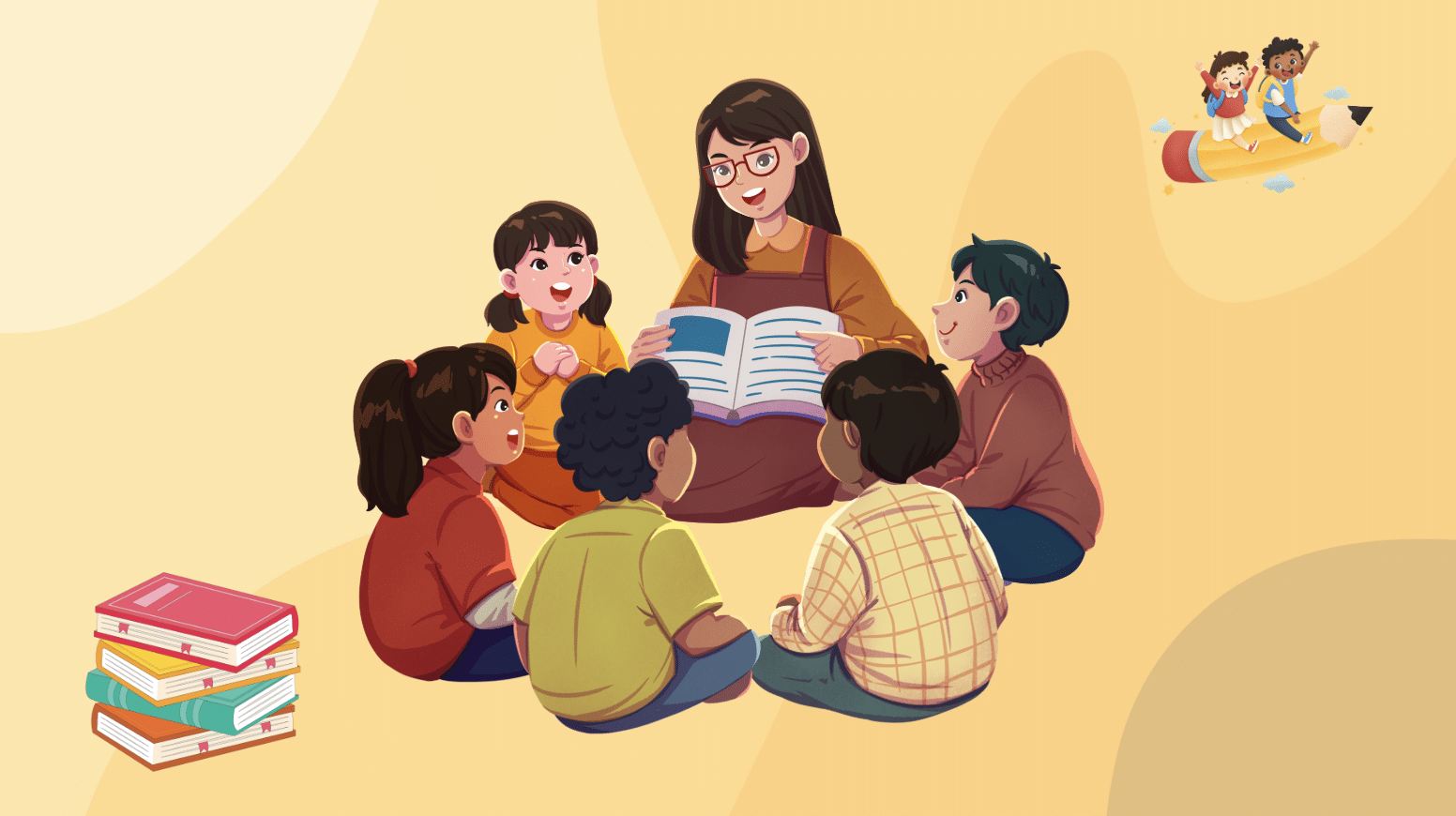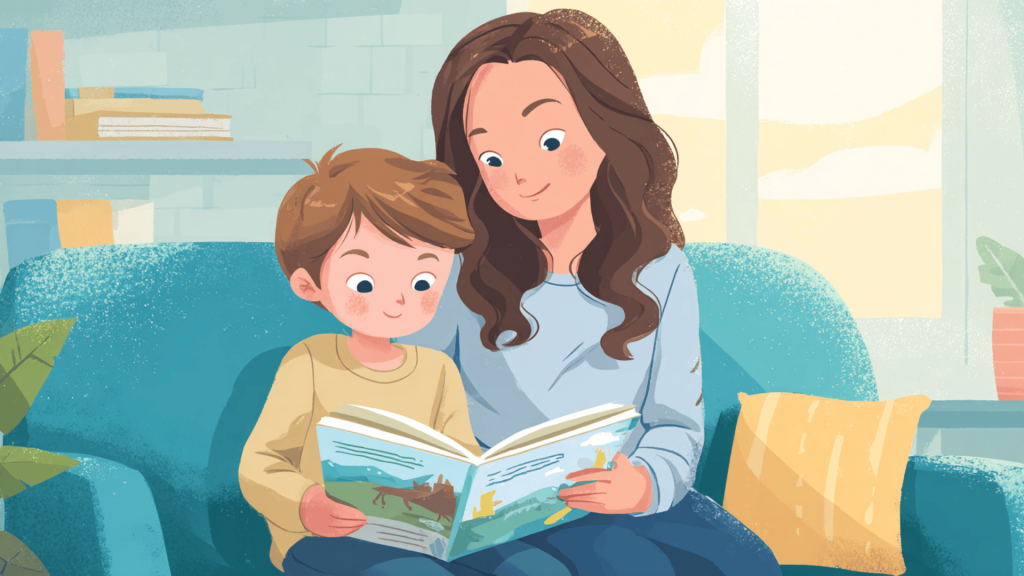Social stories for kids are one of the most helpful tools I’ve seen for supporting children with autism and other learning needs.
Instead of simply telling kids what to do, these stories give them a safe way to practice new skills and prepare for everyday situations.
They work especially well when children feel anxious about changes in routine or social interactions. Parents, teachers, and therapists often turn to social stories because they make learning less stressful and more predictable.
In this guide, I’ll explain what social stories are, how they work, where you can find free resources, and simple ways to use them in daily life.
What are Social Stories?
Social stories are short, simple narratives that teach children what to expect in different situations and how to respond.
They were first created by Carol Gray to support kids with autism, but they can be useful for many learners. Each story explains a setting, event, or behavior in clear language, often with pictures to make it easier to understand.
The goal is to reduce stress and build confidence by giving children a safe way to learn social rules. Social stories work best when they are personalized to the child’s needs and practiced regularly in real-life settings.
Social Stories for Kids: How They Work in Real Life

Social stories aren’t just words on a page. They become powerful tools when children see them connect to everyday life.
- Daily Routines: Stories about brushing teeth, getting dressed, or bedtime help kids follow steps more easily.
- School Life: Topics like lining up, sharing, or fire drills prepare children for classroom expectations.
- Emotions: Stories on calming down, asking for help, or handling frustration guide children through tricky feelings.
- Transitions: Moving to a new school, starting an activity, or meeting new people becomes less stressful.
I’ve seen these simple stories make daily experiences smoother for kids and the adults guiding them.
Free Social Stories for Kids with Autism
Finding free social stories can make it easier for parents and teachers to support children with autism. Many trusted websites offer ready-to-use stories on everyday topics.
- Autism Little Learners: A library of school-focused stories that are updated often.
- Social Workers Toolbox: A Wide range of free PDFs covering safety, health, and social skills.
- ABA Resources: Topic-based stories for communication, manners, and behavior.
- Happy Learners: More than 90 free stories for home and school use.
These resources make it simple to download, print, and start using social stories right away.
What are Social Stories in Special Education Settings?

In special education, social stories are often used to prepare students for daily routines, new events, or social interactions.
They give children with autism and other learning needs clear steps on what to expect and how to respond.
Teachers may read a story before a fire drill, group activity, or classroom change so students feel calm and ready. Social stories can also cover emotions, like how to ask for help or take turns.
When used consistently, they help reduce stress, improve behavior, and make learning environments more supportive and predictable for every child.
Social Stories vs. Other Tools for Kids
Social stories are one way to help children understand social situations, but they aren’t the only option. Other tools can work alongside them to give kids extra support.
| Tools | How They Work | Best For |
|---|---|---|
| Social Stories | Short narratives with text and visuals explaining situations | Autism support, routines, emotions |
| Comic Strip Conversations | Simple drawings showing what people say and feel | Understanding perspectives, conversations |
| Video Modeling | Watching short videos that model behavior | Learning step-by-step tasks, social skills |
| Visual Schedules | Picture-based daily plans | Transitions, organization, independence |
Together, these tools create flexible ways to teach children social, emotional, and daily living skills.
How to Write Social Stories for Kids
Writing social stories is about making situations clear, simple, and supportive for children. The steps below show how to create stories that truly connect with kids:
Step 1: Define the Goal
Start by choosing one situation or behavior to focus on. Keep it specific, such as “lining up for lunch” or “washing hands.” The story should answer what will happen and how the child can respond.
A clear goal keeps the story short and easy to follow. Setting one goal at a time also helps avoid overwhelming the child. This way, the story feels manageable and targeted.
Step 2: Gather the Facts
Think about who, what, when, where, and why. Children need clear, concrete details. For example, “When the bell rings, we walk to the playground.” Avoid vague language, and make sure each fact fits into the child’s real environment.
Including familiar names, places, or objects can make the story feel more personal. The more accurate the details, the more helpful the story will be.
Step 3: Use Simple Sentences
Social stories often mix descriptive, perspective, and directive sentences. Write in the first person and present tense, like “I walk quietly in the hall.” Keep the language short, positive, and easy to understand.
Too much detail can confuse children, so stick to one idea per line. Using repetition of key phrases can also reinforce learning. The goal is clarity, not complexity.
Step 4: Add Visuals
Pictures, symbols, or even real photos make the story easier to understand. Many children with autism process visuals better than text alone. Use one image per idea so it matches the sentence on the page.
Bright and simple visuals usually work best, but photos of the child’s own environment are even more powerful. Consistency in visuals helps kids connect the story to real life.
Step 5: Practice and Review
Read the story together often, especially before the situation happens. Encourage the child to point to pictures or repeat key lines. Practice makes the message familiar and less stressful.
Over time, the child may need less support, and the story can be shortened or faded out. Reviewing progress helps decide if changes are needed. Keeping it flexible ensures the story stays effective.
Social Stories and Autism: Research on Effectiveness
Research has shown that social stories can be valuable tools for children with autism, but results often depend on how they are used. Studies highlight both benefits and important considerations.
- Evidence-Based Practice: Social stories are recognized as helpful in teaching social and behavioral skills.
- Positive Outcomes: Many children show reduced anxiety, better classroom participation, and improved communication.
- Varied Results: Effectiveness can differ depending on the child, story quality, and level of practice.
- Best Practices: Personalization, simple wording, and regular review increase success rates.
Overall, research supports social stories as useful, especially when combined with consistent teaching strategies.
Conclusion
Social stories for kids are simple yet powerful tools that make learning social skills, routines, and emotions more manageable. They offer children with autism a way to understand situations that might otherwise feel confusing or overwhelming.
By breaking down steps into clear language and visuals, these stories can build confidence, reduce stress, and improve daily interactions at home, school, and in the community.
Free libraries and printable resources make it easy for parents and teachers to start using them right away.
I believe the real strength of social stories lies in how flexible they are – they can be adapted for any child or situation. With practice and consistency, social stories can become a trusted guide for both children and adults.











